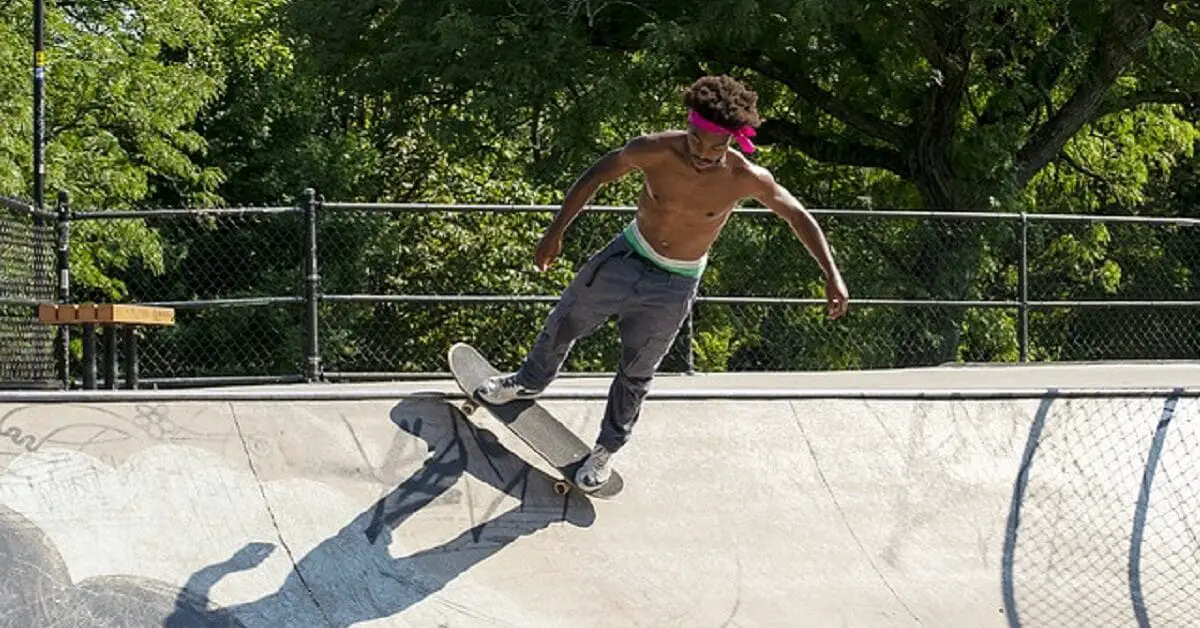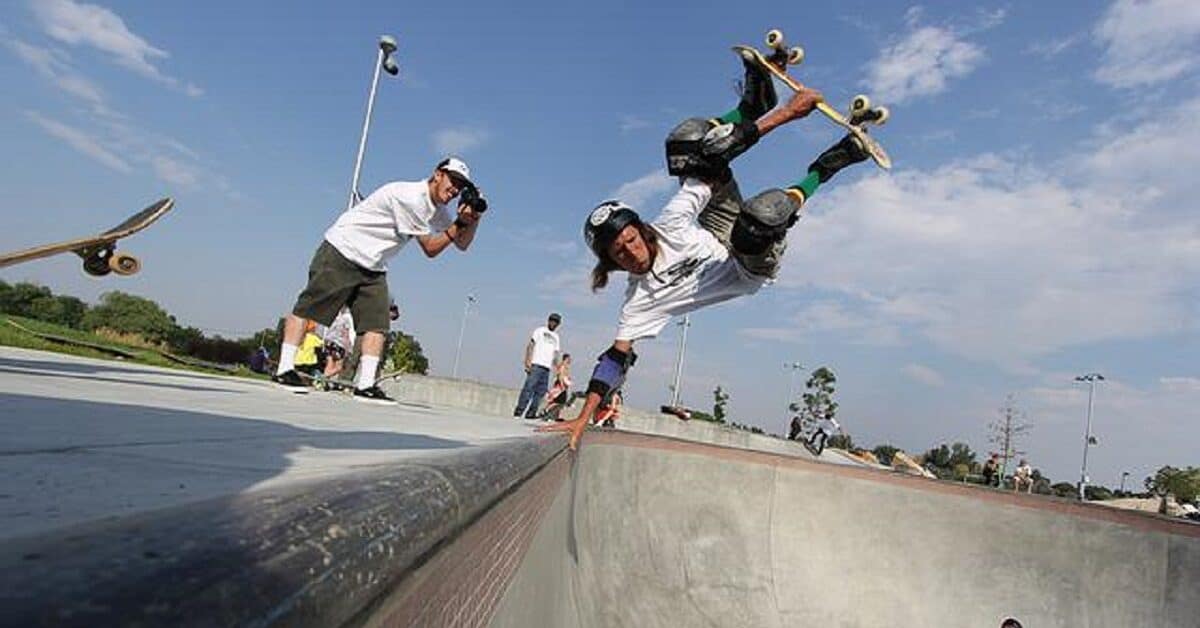
If you’ve been wondering how many calories skateboarding burns, we have answers to your questions.
Enthusiasts who have been searching for information about calories burned by skateboarding may use our calculator to get an estimate (view our Calories Burned By Skateboarding Calculator here).
Our calculator estimates energy expenditure due to skateboarding activity based on your age, sex, height, weight, intensity, and duration of physical activity.
It also computes your Basal Metabolic Rate (BMR) or Resting Metabolic Rate (RMR) based on the information you entered.
It estimates the fat tissue equivalent of calories burned to give an idea of the potential weight loss due to physical activity.
We also provided detailed information for users interested in learning how our calculator estimates the energy cost of physical activity.
Contents:
A cautionary note on energy expenditure estimates
Calories Burned by Skateboarding Calculator
Skateboarding as recreational and sports activity
Does skateboarding burn calories?
Skateboarding builds muscle strength
How many calories do you burn skateboarding?
What is the Standard MET of skateboarding?
How to calculate calories burned using VO2 3.5ml/kg/min
How to calculate the corrected MET
A cautionary note on energy expenditure estimates
The best way to determine the calories burned while performing physical activity is through measurement methods such as direct or indirect calorimetry.
However, because these methods require highly skilled personnel and expensive equipment, most people have to make do with more readily available methods. Formulas that take account of the complex interplay of factors affecting energy expenditure are popular because they are easy to use.
But users should remember that while energy expenditure estimates by online calculators are usually adequate for casual purposes, they don’t offer the most reliable individualized estimates.
Calories Burned by Skateboarding Calculator

Enter the information required in the fields provided, and our calculator estimates the energy you expend while skateboarding.
You need to enter information such as your age, sex, height, weight, intensity, and duration of activity because calories burned depend on all of these factors.
Skateboarding as recreational and sports activity

Skateboarding is a sports activity popular among young people. Teenagers, young adults, and fun-loving older adults engage in it for recreational purposes and as a professional sport.
Skateboarding is an extreme sport alongside activities such as snowboarding, sledding (tobogganing or lugeing), freestyle skiing, in-line roller-skating, freestyle BMX, mountain biking, freestyle motocross (FMX), surfing (surfboarding), and skydiving.
Extreme sports are non-traditional sports involving highly skilled participants executing creative but risky acrobatic maneuvers at high speeds.
Skateboarding for recreational and sports purposes involves a person balancing on a small wheeled board while speeding and performing acrobatic feats. The board is typically about 28 inches-32 inches long and 7.0 inches to 8.25 inches wide.
Skateboarding has a youth subculture status in many parts of the world. It first gained popularity in the 1960s in California, where it emerged among members of the surfboarding culture.
It remains popular around the world today. Statista.com reported that the number of skateboarders in the U.S. rose from 5.83 million in 2011 to 8.87 million in 2020.
Young people gather in urban locations to showcase their vert (vertical) skills on skate ramps and similar inclines.
They also demonstrate street skateboarding skills on rails, stairs, ledges, and other obstacles that simulate features typical of urban environments.
Skateboarding competitions
The first recorded skateboarding competition took place at the Ocean Festival in Del Mar, California, in 1975. Many other contests have emerged since then.
One of the most popular competitions has been part of the biannual X Games since 1995. Competitors participate in multiple categories such as vert, street, big air, and SuperPark.
Other competitions include Vans Triple Crown of Skateboarding, the FISE WS Open Skateboard Street Pro, and Skateboard GB National Championships.
Local competitions include Red Bull Solus (at SC Sandlot, San Clemente, Calif.) and The Boardr Am Series. Others are Skate4Life (Raleigh, North Carolina), Tampa Am/Tampa Pro, and Grind for Life (Tampa, Florida).
Does skateboarding burn calories?

According to our Calories Burned By Skateboarding Calculator, a 21-year-old male, standing 72 inches tall (182.88cm) and weighing 77kg (169.75 lbs), burns about 300-400 calories while engaged in recreational skateboarding for 45 minutes to an hour.
The energy consumption is equivalent to about 6.7 calories per minute.
However, the same young man will burn about 360-480 calories while engaged in vigorous competitive skateboarding for 45 minutes to an hour, equivalent to 8 calories per minute.
A healthy 21-year-old female, standing 66 inches (167.64cm) tall and weighing 60 kg (132lbs), will burn about 230-310 calories while engaged in recreational skateboarding for about 45 minutes to an hour, about 5 calories per minute.
She will burn about 280-370 calories during vigorous competitive activity lasting 45 minutes to an hour, equivalent to 6.2 calories per minute.
These estimates show that you may burn reasonable amounts of calories and maintain a healthy BMI while having fun skateboarding.
Thus, skateboarding may be an effective physical activity for weight control when combined with an effective weight loss diet.
Trampoline or rebound exercise is another fun activity that burns considerable calories and helps weight loss.
Skateboarding health benefits

Studies have reported significant physical and mental health benefits from skateboarding and participating in the subculture.
Wiles and associates (2020) reported that young people who engaged in skateboarding at community parks achieved exercise intensities and durations comparable with the CDC’s recommendations for cardiovascular fitness for their age group.
The researchers reported that older people derived similar health benefits. Adults who skateboarded also achieved exercise intensities and durations recommended for cardiovascular fitness for their age groups.
According to Wiles and colleagues, adult subjects spent 70% of the total skateboarding time at moderate intensity and above, compared with 30% in the low-intensity range.
Another study found that older people may also derive mental health benefits.
Paul O’Connor, a sociology researcher at the University of Exeter, reported that older people who took up skateboarding and participated in the subculture reported feeling empowered.
Skateboarding lowered the risk of mental health problems, including depression.
Skateboarding injury risks

Some studies have raised concerns about the increased risk of physical injuries due to skateboarding.
Osberg and colleagues (1998) reported that skateboarding accidents and injuries were more severe than roller skating or in-line skating injuries.
They reported a higher head injury risk associated with skateboarding.
Cass and Ross (1990) reported that serious injuries (fractures and head injuries) were more common among children under 10 due to poorer motor skills.
Rethnam and associates (2008) conducted a five-year study of skateboard-related injuries seen at an orthopedic unit. The researchers reported that annual injury rates were low and generally minor.
They also noted that most of the injuries seen at the orthopedic unit were upper limb fractures (most commonly distal radius fractures). They occurred in males under 15 (compare Schalamon et al., 2003).
Most cases were treated successfully with plaster immobilization.
The authors reported no severe head or neck injuries, open fractures, and other injuries that required surgical intervention.
The conclusion by Rethnam and colleagues appeared to contradict Osberg and associates, who reported a higher risk of head injuries associated with skateboarding. However, the higher head injury rates Osberg reported may have been due to skateboarders not using head protection gear.
Rethnam and colleagues recommended that youth skateboarding be restricted to supervised parks to reduce pedestrian and traffic incidents.
They also recommended that all skateboarders wear proper protective gear.
Skateboarding builds muscle strength

We have shown that skateboarding burns calories and that regular engagement in the activity may fight overweight and obesity. We also referenced studies showing that skateboarding involved intensities of physical activity that improved cardiovascular fitness.
Balancing on a skateboard requires excellent reflexes, muscle control, coordination, and strength.
Complex maneuvers on a skateboard activate many large muscles.
According to Michele Olson, Ph.D., an Auburn University in Alabama professor of exercise science, skateboarding activates the following large muscles:
- Hamstrings
- Glutes,
- Quads
- Calves
- Lower back
- Abs
A study by Vorlicek and associates (2015) concluded that the preparatory phase of the skateboarding jumping maneuver known as Ollie (see YouTube below) was associated with increased activity of the gastrocnemius medialis and rectus femoris muscles in the lower back limb.
The tibialis anterior and semitendinosus muscles in the lower front limb showed increased activity during the landing phase of the stunt.
How many calories do you burn skateboarding?

Our calculator estimates calories burned by skateboarding using the following equation:
Calories burned per minute = Metabolic Equivalent of Task (MET) x 3.5 ml/kg/min x (weight in kilograms)/200
What is MET?
The Metabolic Equivalent of Task (MET) is the ratio of the rate of oxygen consumption (VO2) while performing physical activity and resting oxygen consumption (V02).
Resting oxygen consumption (VO2), measured in ml/kg/min, is positively related to Resting Metabolic Rate (RMR).
Thus, resting VO2 (measured in ml/kg/min) is interchangeable with RMR (measured in kcal per unit time).
Learn how to re-express kcal/day as ml/kg/min here.
The value of 3.5 ml/kg/min is the standard or referent value of resting VO2 (RMR) established by convention as equivalent to 1 MET.
MET values serve as a measure of the relative intensity of physical activity.
Thus, performing an activity with a MET value of 4 burns four times more energy than resting. Physical activity with a MET value of 8 burns twice as many calories as one with a MET value of 4.
What is standard MET?
The Standard MET value of any physical activity is calculated as the ratio of the rate of oxygen consumption (VO2) while performing the activity (ml/kg/min) and the standard resting VO2 of 3.5 ml/kg/min.
Thus, the standard MET for an actvity with a measured VO2 of 17.5 ml/kg/min is calcuated as:
17.5 ml/kg/min/3.5 ml/kg/min = 5 METs
Note that MET values calculated using the standard resting VO2 value of 3.5 ml/kg/min are not individualized estimates.
Most people don’t have a resting VO2 equal to 3.5ml/kg/min. Thus, MET values estimated using the 3.5 ml/kg/min standard do not adjust for individual differences in age, sex, height, weight, and lean mass.
What is the corrected or individualized MET?
An individualized or corrected MET value is the ratio of measured activity VO2 and measured resting VO2.
Thus, if a subject has a measured VO2 of 17.5 ml/kg/min while engaged in recreational skateboarding and a measured resting VO2 of 3.3 ml/kg/min, her standard MET for the activity would be:
17.5 ml/kg/min/3.5 ml/kg/min = 5 METs
However, her corrected or individualized MET would be:
17.5 ml/kg/min/3.3 ml/kg/min = 5.3 METs
But if you are unable to calculate the corrected MET value by using measured resting VO2, you may use the following equation to estimate its value:
.
Corrected MET value = Standard MET value x 3.5 (ml/kg/min)/VO2 (ml/kg/min) predicted by the Harris-Benedict equation.
You may learn how to use the Harris-Benedict formula (follow the link) to calculate your predicted VO2 (RMR) based on age, sex, height, and weight.
Resting metabolic rate (RMR) is higher in men than in women, increases with lean mass, weight, and height, and decreases with age.
What is the Standard MET of skateboarding?

The Compendium of Physical Activities is a manual that lists the Standard MET values for different categories of physical activities.
According to the Compendium, the MET value of skateboarding depends on the intensity of activity (Table1):
| Code | Activity | Intensity | Standard MET value |
| 15580 | Recreational skateboarding | moderate | 5.0 |
| 15582 | Competitive skateboarding | vigorous | 6.0 |
The Compendium (2011) categorizes activities, sports, and occupations as light, moderate, or vigorous depending on their MET values (see Table 2).
Table 2 shows that competitive skateboarding is a vigorous-intensity activity while competitive trampoline activity is moderate-intensity.
| Code | Activity | Intensity | MET value |
| 07022 | sitting quietly, fidgeting | Light | <3.0 |
| 15702 | trampoline, competitive | Moderate | 3.0-5.9 |
| 15582 | skateboarding, competitive | Vigorous | ≥ 6.0 |
How to calculate calories burned using the standard VO2 of 3.5 ml/kg/min
Example 1:
Calculate calories burned by a 21-year-old male skateboarder, standing 71 inches (180.34 cm) tall and weighing 78kg (172lbs), if he engages in the activity vigorously for 30 minutes.
Solution:
- Calories burned/minute = Standard MET x 3.5 ml/kg/min x (weight in kilograms)/200
- Standard MET of vigorous skateboarding = 6.0 (see table above)
- Calories burned = 6.0 x 3.5 x 78/200 = 8.19 calories per minute
- Calories burned in 30 minutes = 30 x 8.19 = 245.7 calories
Example 2:
Calculate calories burned by a 20-year-old female skateboarder, standing 5ft 5 inches tall (165.1cm), and weighing 55kg, if she engages in the activity with moderate intensity for 45 minutes.
Solution:
- Calories burned per minute = Standard MET x 3.5 ml/kg/min x (weight in kilograms)/200
- Standard MET of moderate intensity skateboarding = 5.0 (see table above)
- Energy expenditure = 5.0 x 3.5 x 55/200 = 4.813 calories per minute.
- Energy expenditure in 45 minutes =45 x 4.813 = 216.6 calories
Table 3 (see below) shows the effect of exercise intensity on energy expenditure for a 20-year-old female skateboarder. She stands 5ft 5 inches tall (165.1cm) and weighs 55 kg. She engages in skateboarding activity with moderate intensity for 30 minutes on Day 1 and vigorous intensity on Day 2.
There was an increase in energy expenditure of 43 calories when skateboarding activity performed for 30 minutes increased intensity from moderate to vigorous.
| Intensity | Duration(in minutes) | Calories burned |
| Moderate | 30 minutes | 216.6 |
| Vigorous | 30 minutes | 259.9 |
How to calculate the corrected MET

Example 3:
Calculate the Corrected MET value for a 21-year-old male skateboarder, standing 5ft 9 inches tall (175.26cm), and weighing 70kg.
Corrected MET value = Standard MET value x 3.5/RMR predicted by Harris-Benedict equation (ml/kg/min)
Step 1: Calculate the skateboarder’s RMR using the Harris-Benedict Equation.
The Harris-Benedict Equation for male individuals is:
RMR = 66.5 + ( 13.76 × wt in kg ) + ( 5.003 × ht in cm ) – ( 6.755 × age in years )
RMR = 66.5 + (13.76 x 70) + (5.003 x 175.26) – (6.755 x 21)
RMR = 66.5 + (963.2) + (876.826) – (141.86)
RMR = 1764.67 kcal/day
Step 2: Convert 1764.67 kcal/day kcal/day to kcal/min: 1764.67/1440 = 1.2255 kcal/min
Step 3: Convert kcal/min to L/min: 1.2255/5 = 0.2451 L/min
Step 4: Convert L/min to ml/kg/min: 0.2451/70 x 1000 = 3.501 ml/kg/min
The predicted resting oxygen consumption (VO2) after correcting for age, weight, height, and gender is 3.501 ml/kg/min
Step 5: The Corrected MET value of vigorous push-ups = 8.0 x 3.5/3.501 = 7.998 MET(s)
Corrected MET value increases relative to standard MET value with increasing age, weight, and height. It decreases with lean mass.
Women also have higher MET values than men of the same age, weight, and height.
Lean mass is one of the best predictors of resting VO2 and activity VO2. People with higher lean mass tend to have higher RMR (or resting V02) and burn more calories during physical activity compared with other people of the same age, sex, weight, and height.
Heavier people also tend to burn more calories than thinner people.

